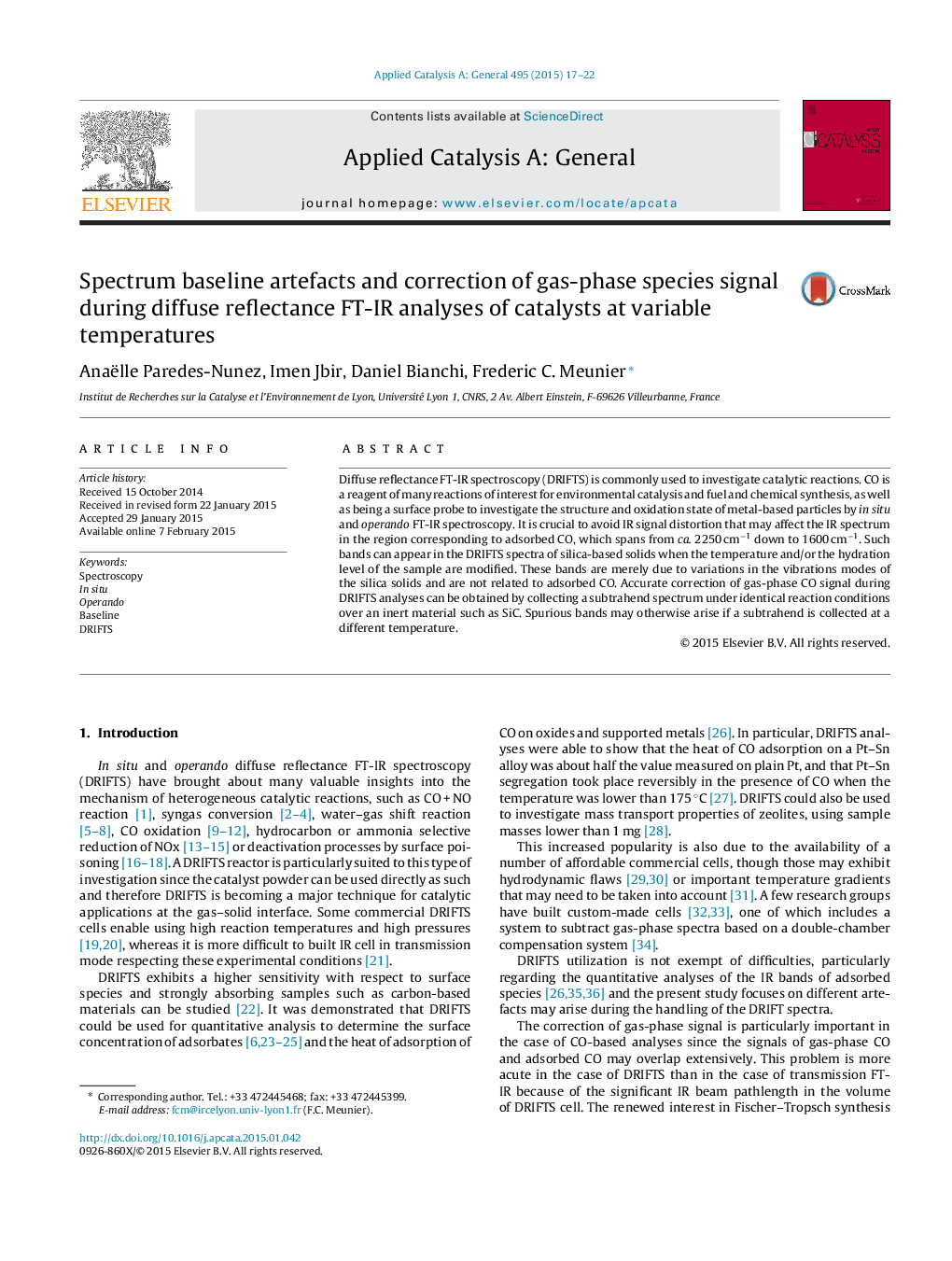| Article ID | Journal | Published Year | Pages | File Type |
|---|---|---|---|---|
| 39296 | Applied Catalysis A: General | 2015 | 6 Pages |
•Variable temperature DRIFTS over silica can lead to spurious bands.•Gas-phase spectra can overwhelm that of adsorbates.•Gas-phase spectrum subtraction requires appropriate reference spectrum.
Diffuse reflectance FT-IR spectroscopy (DRIFTS) is commonly used to investigate catalytic reactions. CO is a reagent of many reactions of interest for environmental catalysis and fuel and chemical synthesis, as well as being a surface probe to investigate the structure and oxidation state of metal-based particles by in situ and operando FT-IR spectroscopy. It is crucial to avoid IR signal distortion that may affect the IR spectrum in the region corresponding to adsorbed CO, which spans from ca. 2250 cm−1 down to 1600 cm−1. Such bands can appear in the DRIFTS spectra of silica-based solids when the temperature and/or the hydration level of the sample are modified. These bands are merely due to variations in the vibrations modes of the silica solids and are not related to adsorbed CO. Accurate correction of gas-phase CO signal during DRIFTS analyses can be obtained by collecting a subtrahend spectrum under identical reaction conditions over an inert material such as SiC. Spurious bands may otherwise arise if a subtrahend is collected at a different temperature.
Graphical abstractFigure optionsDownload full-size imageDownload high-quality image ( K)Download as PowerPoint slide
